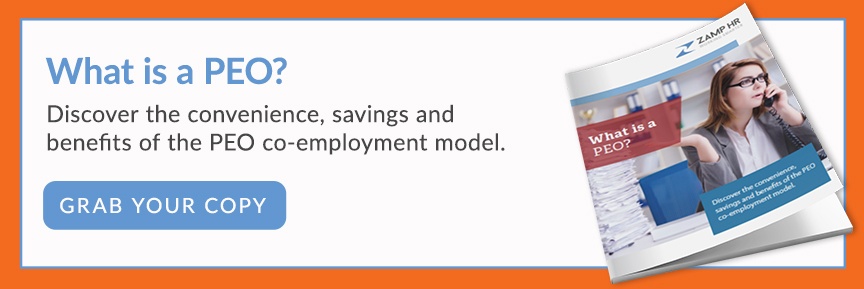Workplace injuries happen in various industries each and every day, and they can lead to significant time away for employees that have been injured on the job. This translates to large financial losses for companies, especially when they pay for medical care and reduced productivity. Companies that employ a return-to-work program often see a significantly lower cost associated with worker injuries, but the return on investment for these types of programs depends entirely on how effective it is.
To keep your business humming along smoothly, you should audit your return-to-work program regularly using Key Performance Indicators (KPIs). This can give you valuable insight into how effective your current return-to-work program is, and where improvements are needed. To further reduce the costs associated with workplace injuries, consider investing in a Professional Employer Organization (PEO) workers' compensation plan.
Learn more about return-to-work programs, which KPIs you can use to measure its effectiveness, and how a PEO can help your company with its HR needs below.
What Is a Return-to-Work (RtW) Program?
A return-to-work program is a company's policies and procedures that work to reduce the time an injured employee spends away from work without also hampering the injured employee's recovery. These policies seek to understand which functions an employee must be able to perform before they return to work, and which are not essential to the employee and can be reassigned to someone else while the employee heals.
These programs also seek to provide accommodations for employees that allow them to perform their essential roles to get them back to work sooner, or they can provide an injured employee with a different function they can perform while they are in recovery. For example, an injured construction worker may not be able to jackhammer concrete, but they may still be able to operate a crane without exacerbating their injuries.
The main benefit of a return-to-work program is to reduce the costs associated with worker's compensation by bringing the employee back to work as soon as possible, while still ensuring they do not injure themselves again or worsen their condition.
How Do You Measure the Effectiveness of a Return-to-Work Program?
Taking careful measurements of your RtW program is the best way you can determine its effectiveness over time. By diligently collecting and analyzing employee injury data, you can make more informed decisions about which aspects currently work and which need improvement. This alludes to the overall amount of money paid out or lost from workplace injuries, but it also deals with how supported employees felt throughout the process.
Some examples of KPIs related to RtW programs include:
- Average and total time away from work for injured employees
- Average and total cost of workers' compensation premiums
- Average and total cost of accommodations for injured employees
- Rate of employee retention after injuries
- Overall satisfaction ratings of injured employees with your RtW program
It's not enough to simply collect the data if you don't analyze it regularly and perform self-audits at least yearly. One of the easiest ways to ensure your RtW program is still effective is by enlisting the help of a PEO.
What Is a PEO?
A PEO, or Professional Employer Organization, is a human resources partner that allows your company to outsource many common HR tasks to professionals that specialize in all things human resources. PEOs are appealing to many companies, as they allow organizations to get comprehensive HR services without having to employ a full HR team. This can result in significant savings each year, especially when you don't have to pay salaries or provide benefits.
PEOs can handle a wide variety of HR tasks, including payroll, benefits administration, workers' compensation coverage, and so much more. Besides saving your company money on full-time HR employee salaries, PEOs can also save your company money by handling recruiting and finding the most affordable benefits plans on your behalf.
Unfortunately, not all PEOs are created equally, making it important to do your research before committing to one PEO over the other options.
Why Use a PEO for Workers' Compensation?
PEOs employ HR professionals that know the ins and outs of workers' compensation, and they have decades of combined experience with setting up RtW programs that use the very best HR practices. PEO HR professionals can help your company get the most benefits while simultaneously minimizing the costs associated with workers' compensation and RtW programs without you having to lift a finger.
Additionally, workers' compensation premiums are determined, in part, by how many employee injuries and claims have been reported in the past, which is called the Experience Modifier Rate (EMR). When you use a PEO, your company actually gains access to the PEO's EMR, which may significantly reduce the cost of workers' compensation premiums the next time an employee gets injured at work. You can also benefit from PEOs financially, because PEOs allow your company to pay-as-you-go on a monthly schedule, while the PEO pays the upfront deposit on your behalf. This can keep costs more consistent, which allows your company to plan ahead.
Finally, PEOs can do the hard work of safety audits and training for you, which helps to minimize injuries in the first place. An ounce of prevention with a PEO is worth far more than a pound of workers' compensation premiums when it comes to the company's bottom line.



